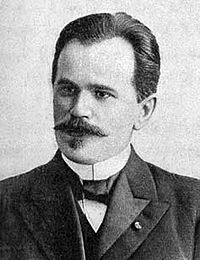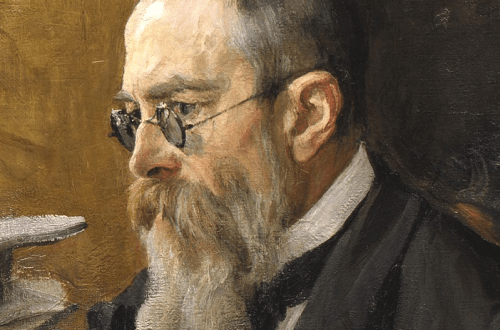
Béla Bartók (Béla Bartók) |
Béla Bartók
If the people of the future ever want to know how the man of our era fought and suffered and how he finally found the path to spiritual liberation, harmony and peace, gained faith in himself and in life, then, referring to the example of Bartok, they will find the ideal of unshakable constancy and an example of the heroic development of the human soul. B. Sabolchi

B. Bartok, a Hungarian composer, pianist, teacher, musicologist and folklorist, belongs to a galaxy of outstanding innovatory musicians of the 3th century. along with C. Debussy, M. Ravel, A. Scriabin, I. Stravinsky, P. Hindemith, S. Prokofiev, D. Shostakovich. The originality of Bartok’s art is associated with in-depth study and creative development of the richest folklore of Hungary and other peoples of Eastern Europe. Deep immersion in the elements of peasant life, comprehension of the artistic and moral and ethical treasures of folk art, their philosophical understanding in many respects shaped Bartok’s personality. He became for contemporaries and descendants an example of courageous fidelity to the ideals of humanism, democracy and internationalism, intransigence to ignorance, barbarism and violence. Bartok’s work reflected the gloomy and tragic collisions of his time, the complexity and inconsistency of the spiritual world of his contemporary, the rapid development of the artistic culture of his era. Bartók’s legacy as a composer is great and includes many genres: 2 stage works (one-act opera and 3 ballets); Symphony, symphonic suites; Cantata, 2 concertos for piano, 1 for violin, 6 for viola (unfinished) with orchestra; a large number of compositions for various solo instruments and music for chamber ensembles (including XNUMX string quartets).
Bartok was born into the family of an agricultural school director. Early childhood passed in the atmosphere of family music making, at the age of six his mother began to teach him to play the piano. In subsequent years, the boy’s teachers were F. Kersh, L. Erkel, I. Hirtle, his musical development in adolescence was influenced by friendship with E. Donany. Bela began composing music at the age of 9, two years later he first and very successfully performed in front of the public. In 1899-1903. Bartok is a student at the Budapest Academy of Music. His teacher in piano was I. Toman (a student of F. Liszt), in composition – J. Kessler. In his student years, Bartok performed a lot and with great success as a pianist, and also created many compositions in which the influence of his favorite composers at that time is noticeable – I. Brahms, R. Wagner, F. Liszt, R. Strauss. After brilliantly graduating from the Academy of Music, Bartok made a number of concert trips to Western Europe. Bartók’s first great success as a composer was brought by his symphony Kossuth, which premiered in Budapest (1904). The Kossuth symphony, inspired by the image of the hero of the Hungarian national liberation revolution of 1848, Lajos Kossuth, embodied the national-patriotic ideals of the young composer. As a young man, Bartok realized his responsibility for the fate of his homeland and national art. In one of his letters to his mother, he wrote: “Each person, having reached maturity, must find an ideal in order to fight for it, devote all his strength and activity to it. As for me, all my life, everywhere, always and by all means, I will serve one goal: the good of the motherland and the Hungarian people ”(1903).
An important role in the fate of Bartok was played by his friendship and creative collaboration with Z. Kodaly. Having become acquainted with his methods of collecting folk songs, Bartok carried out a folklore expedition in the summer of 1906, recording Hungarian and Slovak folk songs in villages and villages. Since that time, Bartók’s scientific and folkloristic activity began, which continued throughout his life. The study of old peasant folklore, which differed significantly from the widely popular Hungarian-gypsy style of verbunkos, became a turning point in the evolution of Bartók as a composer. The primordial freshness of the old Hungarian folk song served as an incentive for him to renew the intonation, rhythm, and timbre structure of music. The collecting activity of Bartók and Kodály was also of great social importance. The range of Bartók’s folklore interests and the geography of his expeditions steadily expanded. In 1907, Bartók also began his teaching career as a professor at the Budapest Academy of Music (piano class), which continued until 1934.
From the late 1900s to the early 20s. in the work of Bartok, a period of intense search begins, associated with the renewal of the musical language, the formation of his own composer’s style. It was based on the synthesis of elements of multinational folklore and modern innovations in the field of mode, harmony, melody, rhythm, and colorful means of music. New creative impulses were given by acquaintance with the work of Debussy. A number of piano opuses became a kind of laboratory for the composer’s method (14 bagatelles op. 6, an album of adaptations of Hungarian and Slovak folk songs – “For Children”, “Allegro barbare”, etc.). Bartók also turns to orchestral, chamber, and stage genres (2 orchestral suites, 2 paintings for orchestra, the opera The Castle of Duke Bluebeard, the ballet The Wooden Prince, the pantomime ballet The Wonderful Mandarin).
Periods of intense and versatile activity were repeatedly replaced by Bartók’s temporary crises, the cause of which was mainly the indifference of the general public to his works, the persecution of inert criticism, which did not support the composer’s bold searches – more and more original and innovative. Bartók’s interest in the musical culture of neighboring peoples more than once provoked vicious attacks from the chauvinistic Hungarian press. Like many progressive figures of European culture, Bartok took an anti-war position during the First World War. During the formation of the Hungarian Soviet Republic (1919), together with Kodaly and Donany, he was a member of the Musical Directory (headed by B. Reinitz), which planned democratic reforms of musical culture and education in the country. For this activity under the Horthy regime, Bartok, like his associates, was subjected to repression by the government and the leadership of the Academy of Music.
In the 20s. Bartok’s style is noticeably evolving: the constructivist complexity, tension and rigidity of the musical language, characteristic of the work of the 10s – early 20s, from the middle of this decade give way to a greater harmony of attitude, the desire for clarity, accessibility and laconism of expression; a significant role here was played by the composer’s appeal to the art of the baroque masters. In the 30s. Bartok comes to the highest creative maturity, stylistic synthesis; this is the time of creating his most perfect works: Secular Cantata (“Nine Magic Deer”), “Music for Strings, Percussion and Celesta”, Sonatas for Two Pianos and Percussion, Piano and Violin Concertos, String Quartets (Nos. 3-6), a cycle of instructive piano pieces “Microcosmos”, etc. At the same time, Bartok makes numerous concert trips to Western Europe and the USA. In 1929, Bartok toured the USSR, where his compositions were met with great interest. Scientific and folklore work continues and becomes more active; Since 1934, Bartók has been engaged in folklore research at the Hungarian Academy of Sciences. In the late 1930s the political situation made it impossible for Bartók to stay in his homeland: his resolute speeches against racism and fascism in defense of culture and democracy became the reason for the continuous persecution of the humanist artist by reactionary circles in Hungary. In 1940 Bartok emigrated to the USA with his family. This period of life was marked by a difficult state of mind and a decrease in creative activity caused by separation from the homeland, material need, and a lack of interest in the composer’s work from the musical community. In 1941, Bartok was struck by a serious illness that caused his premature death. However, even during this difficult time of his life, he created a number of remarkable compositions, such as the Concerto for Orchestra, the Third Piano Concerto. The ardent desire to return to Hungary did not come true. Ten years after Bartók’s death, the progressive world community honored the memory of the outstanding musician – the World Peace Council honored him posthumously with the International Peace Prize. In July 10, the ashes of the faithful son of Hungary were returned to their homeland; the remains of the great musician were interred at the Farkasket cemetery in Budapest.
Bartok’s art strikes with a combination of sharply contrasting principles: primordial strength, looseness of feelings and strict intellect; dynamism, sharp expressiveness and concentrated detachment; ardent fantasy, impulsiveness and constructive clarity, discipline in the organization of musical material. Gravitating towards conflict dramatism, Bartók is far from being alien to lyricism, sometimes refracting the artless simplicity of folk music, sometimes gravitating towards refined contemplation, philosophical depth. Bartok the performer left a bright mark on the pianistic culture of the XNUMXth century. His playing captivated the listeners with energy, at the same time, its passion and intensity were always subordinate to the will and intellect. The educational ideas and pedagogical principles of Bartok, as well as the peculiarities of his pianism, were clearly and fully manifested in works for children and youth, which made up a large part of his creative heritage.
Speaking about the significance of Bartók for world artistic culture, his friend and colleague Kodály said: “The name of Bartók, regardless of anniversaries, is a symbol of great ideas. The first of these is the search for absolute truth in both art and science, and one of the conditions for this is a moral seriousness that rises above all human weaknesses. The second idea is impartiality in relation to the characteristics of different races, peoples, and as a result of this – mutual understanding, and then brotherhood between peoples. Further, the name Bartok means the principle of renewal of art and politics, based on the spirit of the people, and the demand for such renewal. Finally, it means spreading the beneficial influence of music to the widest strata of the people.
A. Malinkovskaya





